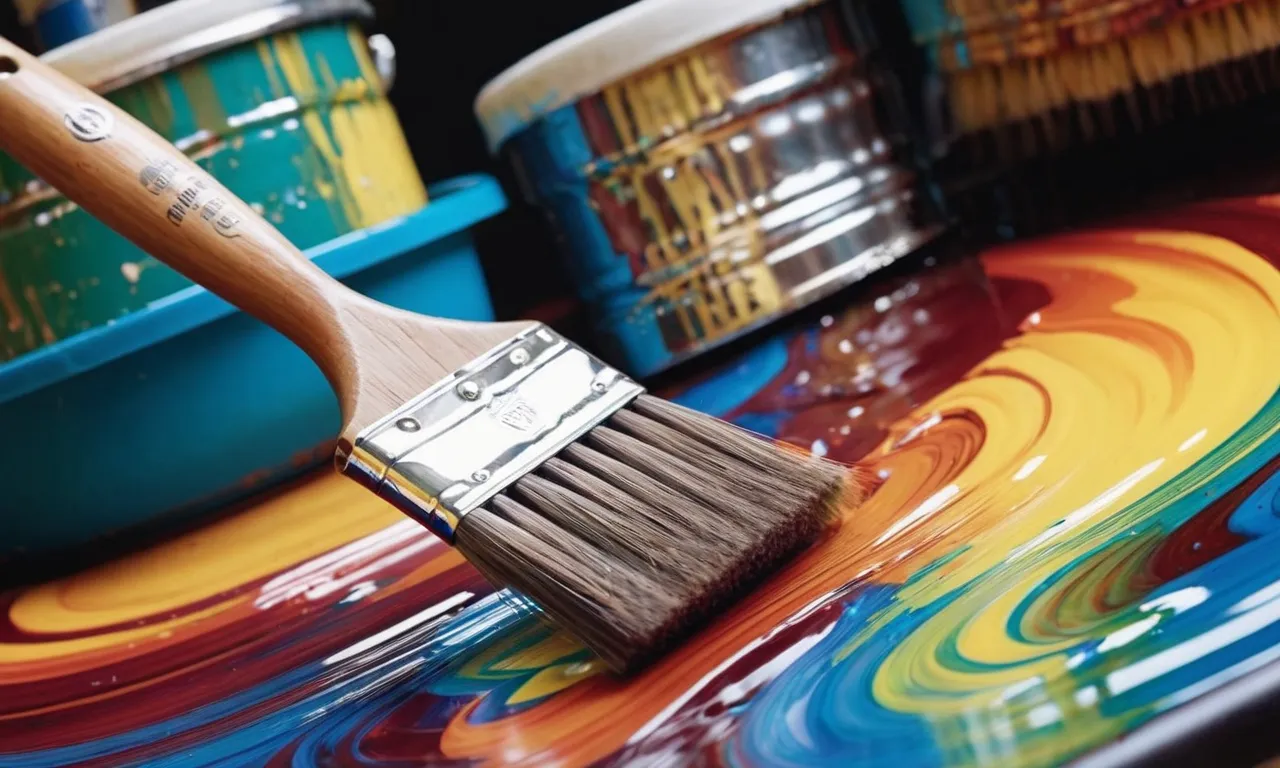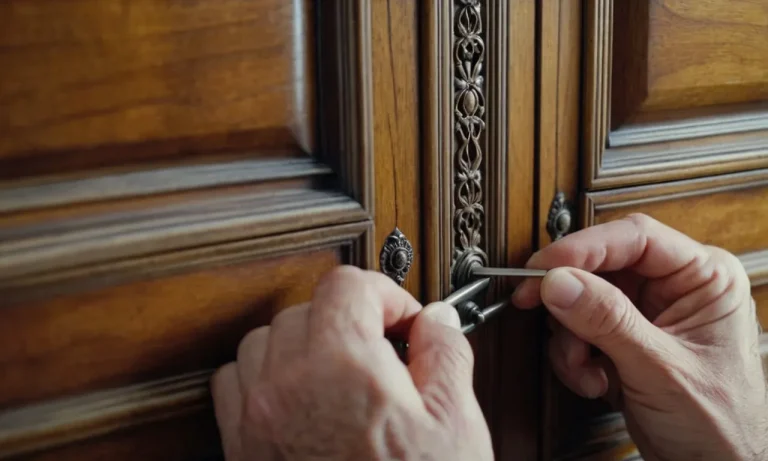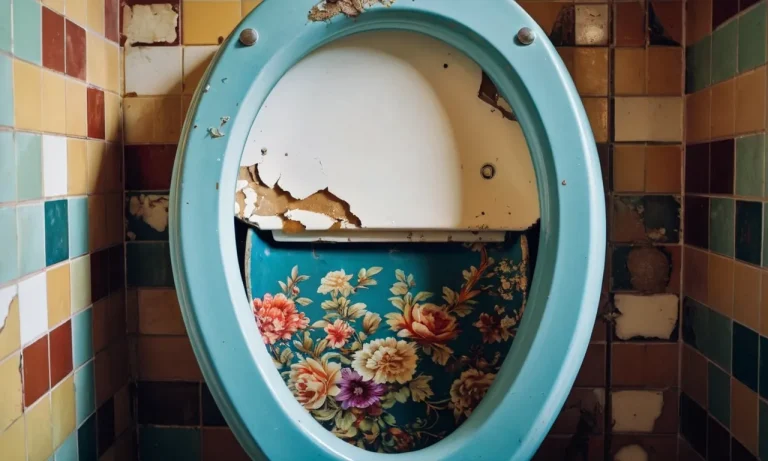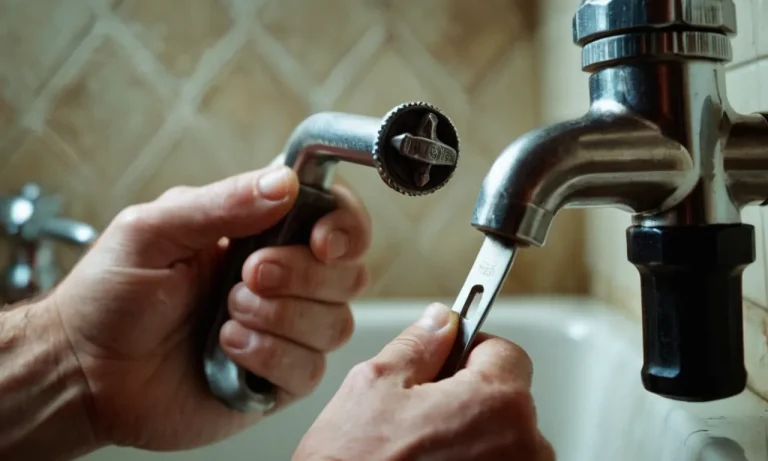How To Effectively Clean Paint Brushes With Paint Thinner
If you’ve just finished a big paint job, you’re probably faced with a pile of paint-caked brushes that need cleaning. While soap and water can work for cleaning freshly used brushes, once paint has dried on the bristles, it requires a stronger solvent to get the job done.
This is where paint thinner comes in handy.
If you’re short on time, here’s a quick answer to your question: The best way to clean dried paint brushes with paint thinner is to fully submerge the brush bristles in paint thinner and let them soak for 15-30 minutes before gently swirling and wiping the brush against the side of the container until the paint breaks free.
Then wash the brush with soap and water.
In this comprehensive guide, we’ll go over everything you need to know about effectively using paint thinner as a solvent for cleaning brushes with dried acrylic, oil or latex paint. We’ll cover tips for choosing the right thinner, techniques for soaking, swirling and wiping, advice for removing stubborn paint, and how to care for your brushes after paint thinner cleaning.
Choosing the Right Paint Thinner for Your Paint Type
When it comes to cleaning paint brushes, using the right paint thinner is crucial for effective results. Different types of paints require different thinners to break down the paint and clean the brushes properly.
Here are some guidelines to help you choose the right paint thinner for your paint type:
Mineral spirits for oil-based paints
If you’re working with oil-based paints, mineral spirits are your best bet for cleaning your brushes. Mineral spirits are a petroleum-based solvent that effectively removes oil-based paints from brushes. They are readily available at hardware stores and are relatively inexpensive.
Remember to always work in a well-ventilated area when using mineral spirits.
Denatured alcohol for shellac, lacquer and varnishes
Shellac, lacquer, and varnishes can be challenging to clean from brushes, but denatured alcohol can get the job done. Denatured alcohol is a solvent that dissolves these types of finishes effectively. It is important to note that denatured alcohol is highly flammable, so take necessary precautions and use it in a well-ventilated area.
Lacquer thinner for latex and acrylic paints
If you’re working with latex or acrylic paints, lacquer thinner is the ideal choice for cleaning your brushes. Lacquer thinner is a strong solvent that breaks down latex and acrylic paints, making it easier to remove them from your brushes.
It is important to wear protective gloves and work in a well-ventilated area when using lacquer thinner.
Automotive fuel blends as an eco-friendly option
For those looking for an eco-friendly alternative to traditional paint thinners, automotive fuel blends can be a good option. Some automotive fuel blends, such as those containing ethanol, can effectively clean paint brushes.
However, it is important to do thorough research and consult professionals before using automotive fuel blends as paint thinners.
Note: Always read and follow the manufacturer’s instructions when using paint thinners. Proper safety precautions should be taken, such as wearing protective gloves and working in a well-ventilated area.
For more information on paint thinners and their uses, you can visit websites like painting-ideas-and-techniques.com or sherwin-williams.com.
Preparing Your Workspace and Brushes
Work in a well-ventilated area
When it comes to cleaning paint brushes with paint thinner, it is important to work in a well-ventilated area. The fumes from the paint thinner can be strong and harmful if inhaled for an extended period of time.
Opening windows and using fans can help to circulate the air and minimize the exposure to these fumes. If possible, consider setting up your workspace outdoors or in a garage with proper ventilation.
Wear gloves and eye protection
Safety should always be a top priority when working with paint thinner. Before you begin cleaning your brushes, make sure to wear protective gloves and eye protection. This will help to prevent any potential contact with the paint thinner, which can be irritating to the skin and eyes.
Remember, it’s always better to be safe than sorry!
Remove excess paint first
Before using paint thinner to clean your brushes, it’s important to remove any excess paint. You can do this by wiping the brush on a clean cloth or paper towel until most of the paint has been removed. This will make the cleaning process much more effective and efficient.
Have backup brushes available
While cleaning your brushes with paint thinner, it’s always a good idea to have backup brushes available. This way, if a brush becomes too damaged or stained to be effectively cleaned, you can simply switch to a new brush without interrupting your workflow.
Having backups on hand will save you time and frustration in the long run.
Soaking and Swirling Techniques
When it comes to effectively cleaning paint brushes with paint thinner, using soaking and swirling techniques can make a world of difference. These techniques help to remove dried paint and restore your brushes to their original condition. Here are some steps you can follow:
Fully submerge brush bristles in paint thinner
The first step is to fully submerge the brush bristles in paint thinner. This allows the paint thinner to penetrate the bristles and break down the dried paint. Make sure to use a container that is large enough to accommodate the entire brush.
Pro tip: If you don’t have a suitable container, you can use a glass jar or a plastic container with a lid. Just make sure the container is clean and won’t react with the paint thinner.
Let brushes soak 15-30 minutes before wiping
After submerging the brush bristles, let them soak for 15 to 30 minutes. This gives the paint thinner enough time to soften and loosen the dried paint. During this time, you can take a break or attend to other tasks.
Did you know? Allowing the brushes to soak for a sufficient amount of time can help save you time and effort in the long run. It allows the paint thinner to do most of the work in breaking down the dried paint.
Gently swirl and tap bristles against container
Once the soaking time is up, take the brush out of the paint thinner and gently swirl and tap the bristles against the container. This helps to dislodge any remaining paint particles and ensures a thorough cleaning.
Remember: Be careful not to be too rough with the bristles, as this can cause damage to the brush.
Repeat soaking and swirling if needed
If there are still traces of paint left on the brush after the first round of soaking and swirling, don’t worry. Simply repeat the process until the brush is clean. It may take a few rounds, especially if the paint has dried for a long time or if it is oil-based paint.
Tip: For stubborn paint, you can also use a brush cleaner or mild soap to help remove the remaining residue.
By following these soaking and swirling techniques, you can effectively clean your paint brushes with paint thinner and ensure they are ready for your next painting project.
Removing Stubborn Paint with Paint Thinner
When it comes to cleaning paint brushes, sometimes regular soap and water just won’t do the trick. That’s where paint thinner comes in handy. Paint thinner is a solvent that can effectively remove stubborn paint from the bristles of your brushes, making them clean and ready for your next project.
Use a brush comb to loosen dried paint chunks
If you’re dealing with dried paint chunks on your brush, a brush comb can be a lifesaver. Gently run the comb through the bristles, starting from the base and working your way towards the tips. This will help to loosen any dried paint and make it easier to remove.
Try a wire brush for extra scrubbing power
Sometimes, a brush comb may not be enough to remove stubborn paint. In such cases, a wire brush can provide that extra scrubbing power. Use the wire brush to gently scrub the bristles, being careful not to damage them.
This method can be particularly effective for removing dried paint that has hardened on the brush.
Use a small knife to gently scrape paint buildup
If you notice a buildup of paint near the base of the bristles, a small knife can come in handy. Take a small knife and gently scrape away the paint buildup, being careful not to damage the bristles. This technique can be especially useful for removing thick layers of paint that may have accumulated over time.
Rub bristles with an old toothbrush
For those hard-to-reach areas on your paint brushes, an old toothbrush can be a great tool. Wet the bristles of the brush with paint thinner and then use the toothbrush to gently rub the bristles in a circular motion.
This will help to remove any remaining paint residue and leave your brush clean and ready for use.
Remember to always follow safety precautions when working with paint thinner. Use it in a well-ventilated area, wear gloves, and dispose of it properly. With these tips and techniques, you can effectively clean your paint brushes and maintain their longevity, ensuring that they are always in great condition for your next painting project.
Caring for Brushes After Paint Thinner Cleaning
Once you have effectively cleaned your paint brushes using paint thinner, it is important to properly care for them to ensure their longevity and optimal performance. Here are some steps you can follow to care for your brushes after using paint thinner:
Rinse with soap and water after paint thinner
After cleaning your brushes with paint thinner, it is essential to thoroughly rinse them with soap and water. This helps to remove any remaining paint thinner residue and ensures that your brushes are clean and ready for future use.
Simply lather the bristles of the brush with a mild soap and rinse them under warm water until the water runs clear.
Reshape and allow brushes to fully dry
After rinsing, gently reshape the bristles of the brush to their original shape. Use your fingers to reshape the bristles while they are still wet, as this will help to maintain their shape. Then, lay the brushes flat or hang them upside down to allow them to fully dry.
This prevents water from pooling at the base of the bristles, which can cause damage over time.
Store brushes suspended in air or horizontal
When it comes to storing your paint brushes, it is best to either hang them in the air or lay them horizontally. Storing brushes upright can cause the bristles to bend or become misshapen. Hanging the brushes or laying them flat helps to preserve their shape and prevent any unnecessary damage.
Condition bristles regularly with brush restorer
To keep your brushes in top condition, it is recommended to regularly condition the bristles with a brush restorer. This product helps to soften and rejuvenate the bristles, keeping them flexible and extending their lifespan. Follow the instructions on the brush restorer product for best results.
By following these steps, you can ensure that your paint brushes stay in great shape after using paint thinner. Taking proper care of your brushes not only prolongs their lifespan but also helps you achieve better painting results. Happy painting!
Conclusion
Cleaning oil, acrylic or latex paint brushes using paint thinner can be an effective and inexpensive solution compared to buying new brushes. With the proper precautions, techniques and aftercare, you can keep your brushes in great shape for all your painting projects.
Just be sure to work in a well-ventilated area and properly dispose of used thinner.
By following the tips outlined here for choosing a compatible thinner, soaking, swirling and scrubbing bristles, and conditioning brushes after cleaning, you can remove even the most stubborn dried paint from your used brushes.
With a little time and elbow grease, your paint brushes will be ready for their next masterpiece!







